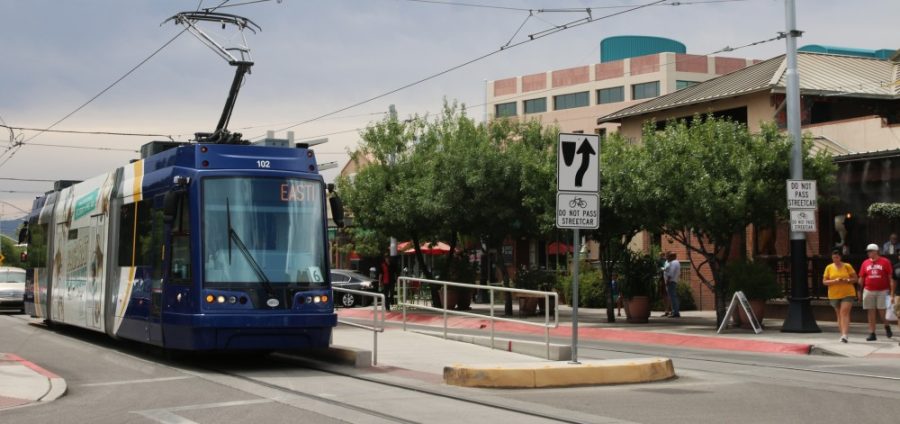Tucson seems to be upping its transit development around town. Its grant was expanded, roads are seemingly being repaved more and more and other construction projects have become a mainstay when driving around. Most of these projects focus on the roadways themselves, designed for car-based transit. They center around expanding access for cars and an already car-centric roadway. There are a few key issues with this, especially in a city like Tucson, which already faces urban sprawl and lacking public transit.
If transit remains car-focused and based around the downtown area, Tucson will fall increasingly into the pit many other cities, especially western ones, have fallen into. Suburbanization has already occurred, and Tucson is already in many ways faced with urban sprawl. Many Americans are still met with the necessity of car usage, often due to urban planning and its influences on resident behaviors. Many people, especially Tucson residents, are presented with suburban areas that lack access to public transit or are simply too inconvenient to reasonably consider walking, biking or taking the bus.
Sun Tran ridership even decreased 8.1% from December 2017 to the following year, according to their website. Instead, areas where transit has improved the most are places where people who are already privileged and rely less on public transportation typically frequent and live, like the streetcar that runs in the downtown area. Projects like the streetcar, while promoted for their economic bolstering of downtown, fail to acknowledge the large sum of Tucsonans who are unable to access it. Attention has been focused on the economic outputs that occur for downtown, where many locals don’t live or commute to. Those who would benefit most from low-cost public transit, such as lower income families and those further out from the core, are left out of the plan for projects around campus, like the streetcar.
RELATED: Change happens when you go out to do it
There are social implications to the lack of investment in public transit as well. Those who are privileged enough to afford a car, including maintenance, gas and so forth, are the same people who would be less likely to take public transit except in heavily urbanized areas. In Tucson, this also carries weight due to our extreme climate, leaving many people without cars or reliable transit at the whim of excessive heat while biking or walking. While infrastructure for biking has improved within recent years, the city still has many ill-equipped or dangerous roads for riders due to small bike lanes and a lack of protection outside the city center. Pedestrian deaths have also increased within recent years from 160 pedestrians killed in 2013 to 245 killed in 2018 according to a KVOA report.
There a few key issues with the car-based strategy of transit planning. Most importantly, it fails to focus attention on serious social problems and instead misdirects funds into projects that won’t generally benefit the average person of the city. They lack an equitable approach that promotes and sustains public transit for lower income residents, especially when funds are channeled into projects largely not usable by the common resident (i.e. the streetcar). Furthermore, it fails to see the dire need for better transit planning, especially a divergence away from cars and a promotion of alternative transportation.
While people may not have the access and means now to switch primarily to public transit, it is possible, as shown by the city center’s increasing infrastructure. It is climate denialism to still rely on car-focused design strategies, and by refusing to promote the development of equitable alternative transit, issues of environmental sustainability are exacerbated, especially in a city situated in an extreme climate.
RELATED: Protesters call for the removal of professor over homophobic comments
While the city does a lot of good in terms of transit, and it was one of the top 50 urbanized areas with most transit travel in 2016 and 2017, according to the American Public Transportation Association, there is still a distinct gap between the wider Tucson area and downtown, with the average household owning 2 cars and only 2.6% of commutes being through public transit according to the U.S. Census Tucson’s placement as a growing urban center leaves a responsibility for providing equitable access to public transit. Bus lanes are mainly non-existent, bike infrastructure is still minimal and many residents find themselves back in their cars and stuck in traffic.
Follow the Daily Wildcat on Twitter









